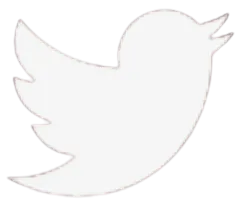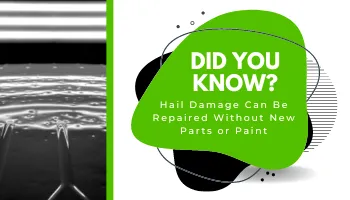Remediation Lead Pros Blog
Water, Fire, and Mold Remediation Marketing Blog
Our mission for this blog is to create a place for our clients and non-clients alike. Whether you've been working with us for years and are looking to learn something new, or if you are simply researching marketing techniques, this blog page is for you!


How to Pitch Compelling Sales Proposals for Remediation Company Clients Using SEO
How to Pitch Compelling Sales Proposals for Remediation Company Clients Using SEO
In this article, we will provide tips and best practices for remediation company owners on how to create compelling sales proposals. We will cover topics such as the target audience, templates, pitches, proposals, and sales pitches, as well as how to grab your audience’s attention, seal the deal, and stay in touch with prospective clients.
Creating Sales Proposals for Remediation Company Owners
As a remediation company owner, one of the most important things you will do is pitch your services to potential clients. Your pitch can be the difference between landing a new customer and losing out to a competitor. This is where sales proposals come in. A well-crafted sales proposal can help you grab your audience’s attention and seal the deal.
Understanding Your Target Audience
The first step in creating a compelling sales proposal is understanding your target audience. Who are your potential clients? What are their pain points? What solutions do they need?
One way to answer these questions is to create a client persona. A client persona is a fictional representation of your ideal customer. It should include demographic information such as age, gender, and income, as well as psychographic information such as values, beliefs, and behaviors.
Once you have a clear understanding of your target audience, you can tailor your sales pitch and proposal to their specific needs.
Use Templates to Get Started
Templates can be a great way to get started on your sales proposal. There are many free and paid templates available online that you can customize to fit your needs.
When choosing a template, look for one that is concise and easy to read. You want to avoid overwhelming your potential clients with too much information. A good template should also include sections for your company’s background, proposed solutions, and a call to action.
Crafting Your Pitch
Your pitch is the foundation of your sales proposal. It should be clear, concise, and targeted to your potential clients. Here are some best practices to keep in mind when crafting your pitch:
- Use jargon-free language: Avoid using technical jargon that your potential clients may not understand.
- Highlight specific needs: Focus on the specific needs of your potential clients and how your product or service can help them.
- Visualize the solution: Use visuals such as graphs, charts, and images to help your potential clients visualize the proposed solution.
Writing a Compelling Proposal
Your proposal should build on your pitch and provide more detailed information about your proposed solution. Here are some best practices to keep in mind when writing your proposal:
- Cover various types of solutions: Offer different types of solutions, including tangible and intangible benefits.
- Use metrics: Use metrics such as ROI or savings to show the potential value of your proposed solution.
- Provide case studies: Use case studies and testimonials to show how your product or service has helped existing clients.
- Customize your proposal: Customize your proposal to fit the specific needs of your potential clients.
H2 Header: Creating an Eye-Catching Sales Pitch
An eye-catching sales pitch can help you stand out from the competition. Here are some tips to make your sales pitch more visually appealing:
- Use high-quality visuals: Use high-quality images and graphics to make your sales pitch more visually appealing.
- Keep it concise: Use bullet points and short paragraphs to keep your sales pitch concise and easy to read.
- Use different types of media: Incorporate different types of media such as videos or slide decks to make your sales pitch more engaging.
Sealing the Deal
A call to action (CTA) is an essential part of any sales proposal. A CTA is a prompt for your potential clients to take action. After presenting your proposed solutions, you need to give your prospects a nudge to seal the deal. Here are a few tips for crafting a strong CTA:
- Keep it simple: Your CTA should be straightforward and easy to understand. Avoid using jargon or overly technical terms that your prospects may not be familiar with.
- Make it actionable: Your CTA should encourage your prospects to take a specific action, whether it's scheduling a meeting, signing a contract, or placing an order. Be clear about what you want them to do.
- Use urgency: Creating a sense of urgency can motivate your prospects to take action sooner rather than later. You can use phrases like "limited time offer" or "act now" to convey a sense of urgency.
- Provide value: Offer your prospects something of value in exchange for taking action. This could be a discount, a free trial, or a bonus service. Make sure the value you're providing is relevant to your prospect's needs.
Writing a compelling sales proposal can be a daunting task, but it doesn't have to be. By following these tips and best practices, you can create a proposal that resonates with your target audience and drives new business. Remember to focus on the client's pain points, use clear and concise language, and provide visual aids to help your proposal stand out. Customize your proposal to the specific needs of each prospective client, and use case studies and testimonials to build credibility. Finally, don't forget to include a strong call to action that encourages your prospects to take action.
Creating a compelling sales proposal for remediation company owners requires careful planning, effective communication, and an understanding of the needs and pain points of potential clients. By following best practices and tailoring your proposal to your target audience, you can create a proposal that stands out and helps you win new clients.
To start, it's important to understand your target audience and their specific needs. Take the time to research and visualize the pain points that your prospective clients might be experiencing. This will help you develop a solution that addresses their specific needs and demonstrates your value as a remediation company. Consider using Google Analytics to track website activity and see which services are most in demand.
When writing a proposal, it's important to keep your sales pitch concise and targeted toward the right people. Use clear and concise language, and avoid using jargon or technical terms that might confuse your audience. Consider including case studies and testimonials to support your proposed solutions and demonstrate your expertise.

An eye-catching and visually appealing proposal can also help you stand out from the competition. Use high-quality images and graphics to help illustrate your proposed solutions and differentiate your services from others in the industry. Be sure to also use a professional-looking template that is easy to read and navigate.
Sealing the deal with a call to action (CTA) is an essential part of any sales proposal. A CTA is a prompt for your potential clients to take action, whether it's signing up for your services, scheduling a consultation, or contacting you for more information. Be sure to include a clear and concise CTA at the end of your proposal that prompts the potential client to take the next step.
Finally, it's important to follow up with potential clients after submitting your proposal. Stay in touch and offer to answer any questions they may have. Remember that developing relationships with your clients is essential for building your business and winning new clients through referrals and repeat business.
In conclusion, creating a compelling sales proposal for remediation company owners requires careful planning, effective communication, and an understanding of the needs and pain points of potential clients. By following best practices, tailoring your proposal to your target audience, and including a strong call to action, you can increase your chances of winning new clients and growing your business.

Written By: Kylee Winn
I love spreading knowledge and value to the world. I shed light on what I do best: digital marketing.
Up Next >
Up Next >
Contact Us
Service Hours
Social Media
info@remediationleadpros.com
(888) 502-2048
1000 N Green Valley PkwyHenderson, NV 89074
Monday - Friday: 9:00 AM - 5:00 PM
Saturday: 10:00 AM - 2:00 PM
Sunday: Closed
@remediationleadpros
On all social media platforms, follow for weekly content, blogs, and tips to help you organically grow your remediation business.
2023 | Remediation Lead Pros | All Rights Reserved
![Business Name - [keyword]](https://images.leadconnectorhq.com/image/f_webp/q_80/r_1200/u_https://assets.cdn.filesafe.space/y4wncd2hL4qkTxQozn2h/media/63bd7285a6fc4e76eebd0471.png)
Privacy Policy | Site Map

VIP Hail Service
Automotive Hail
Repair Blog

Our mission (other than repairing hail damage) is to inform you with relevant, factual and accessible content about automotive hail damage repair and paintless dent removal. If your vehicle is ever ravaged by a hail storm, you'll find everything you need to know before having the hail damage repaired. Speak with a certified technician for a quick response.
This article will provide an actionable guide on what to do if your vehicle has hail damage. Having dozens of dents on your vehicle can be rather intimidating, that is until you realize how fast and affordable it can be to have them repaired. VIP Hail Service has 30 years of experience in easing our customer's minds when hail hits close to home.
As the storm clouds fade and hail stones lay dormant after an epic battle with your vehicle; you step out to find what seems like a victory for Mother Nature. You should first take a quick inventory of the damages looking for things like broken glass, the relative size and quantity of dents in preparation for the important call to your auto insurance provider. Filing a hail damage claim soon after the storm ensures you get the most out of the claim and your car back looking as good as new in a matter of days.
Things to Know Before Automotive Hail Damage Repair
Everything to know before automotive hail damage repair; starting with paintless dent removal (PDR). If you have any knowledge of PDR

you are one step ahead! It's the trusted and preferred method to repair hail damage. Technicians will often gain access behind the dents and use special rods to push them back to the original shape.
Hail damage used to be such a hassle that we built a business around repairing the damages it causes to local residents' vehicles every year. In 92' when VIP Hail Service first opened, hail damage was feared in a financial sense. People had very few options for trust worthy hail repairs and there was rarely ever deductible assistance or deductible-free hail repair that's offered today.
Paintless dent removal wasn't as prevalent of a service then, leading to more hail damaged cars being sent to body shops for traditional repairs, where the damage and repair was reported on the title or worse, the vehicle could be totaled completely in the eyes of insurance.
Hail Repair Origins - The History of Paintless Dent Repair
Paintless dent repair techniques would make the first public display on record at the 1960 'International Motor Sports Show' in New York by Oscar Flaig of Mercedes-Benz. Mending malleable metals into a desired shape or design as an art form dates back to the 3rd century B.C. Metals such as Gold, Silver, Copper and Tin were used along with techniques called repoussé and chasing.
These are the earliest documented terms for methods in metalworking where a metal is shaped by hammering from the back side to create the design. Chasing, later termed embossing, is a similar technique often used in conjunction with repoussé where hammering occurs from the front side to sink the metal; both of which are still heavily used in paintless dent repair and hail repair today.


Written By: Josh C.
Josh enjoys marketing for paintless dent removal companies and writing content that leads you to the best PDR shops around.














